Complete Solutions to Integer of chapter WORK, POWER & ENERGY of Class 11 book with complete answers and questions
| Class 11 | PHYSICS |
| Chapter | WORK, POWER & ENERGY |
| CENGAGE PHYSICS | Integer |
| Number Of Questions | 14 |
| Academic Year | 2023-24 |
In the situation shown in figure all contact surfaces are smooth. The force constant of the spring is K. Two forces F are applied as shown. The maximum elongation produced in the spring is how many times of `F//K` (initially the spring is relaxed)?
 02:34View Solution
02:34View SolutionAn insect jumps from ball A onto ball B, which are suspended from inextensible light strings each of length `L=8cm`. The mass of each ball and insect is same. What should be the minimum relative velocity (in `ms^-1`) of jump of insect w.r.t. ball A, if both the balls manage to complete the full circle?
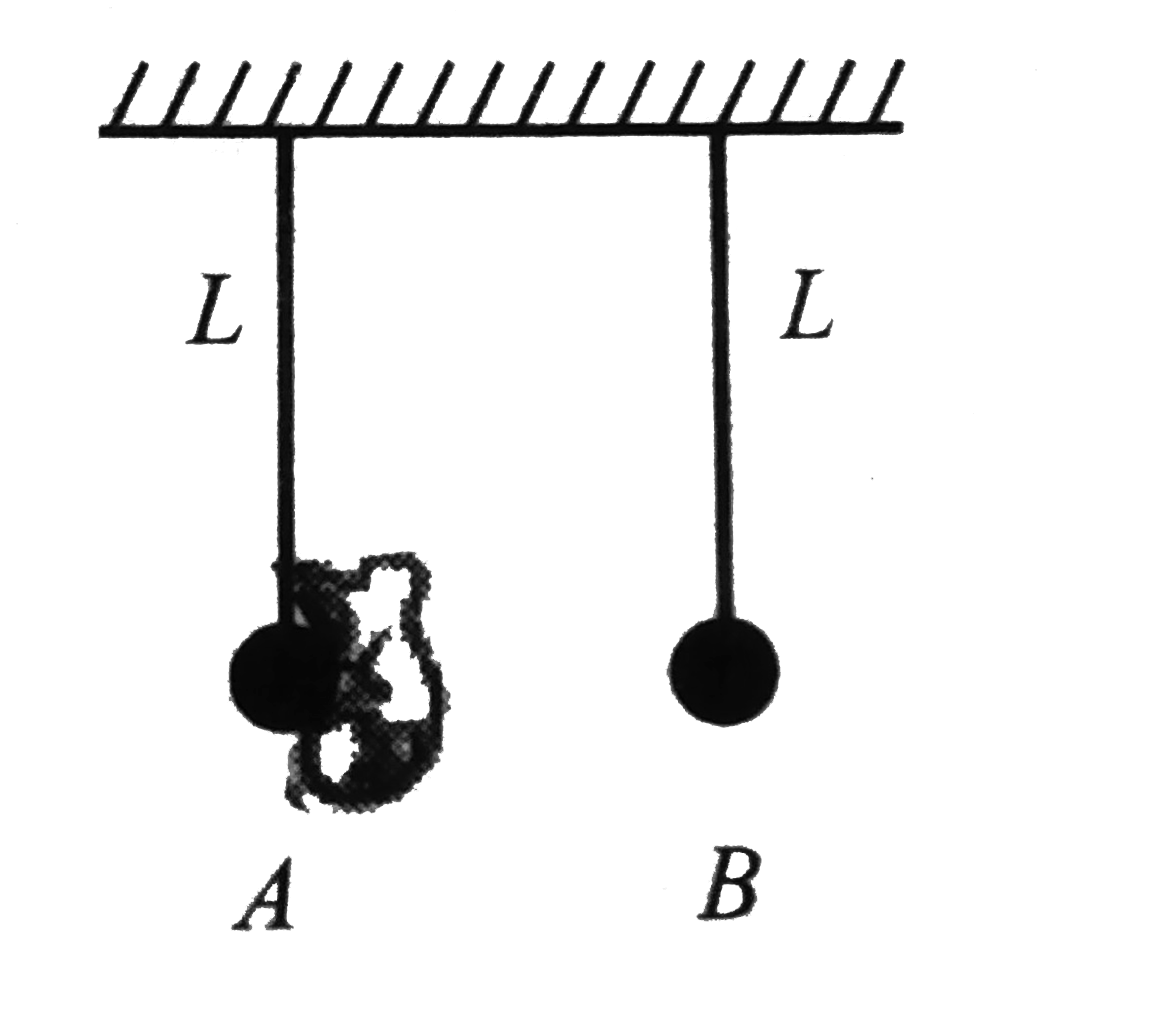 02:28View Solution
02:28View SolutionThe PE of a certain spring when streched from natural length through a distance `0.3m` is `5.6J`. Find the amount of work in joule that must be done on this spring to stretch it through an additional distance `0.15m`.
03:20View SolutionA block of mass m is moving with an initial velocity `v_0` towards a stationary spring of stiffness k attached to the wall as shown in figure
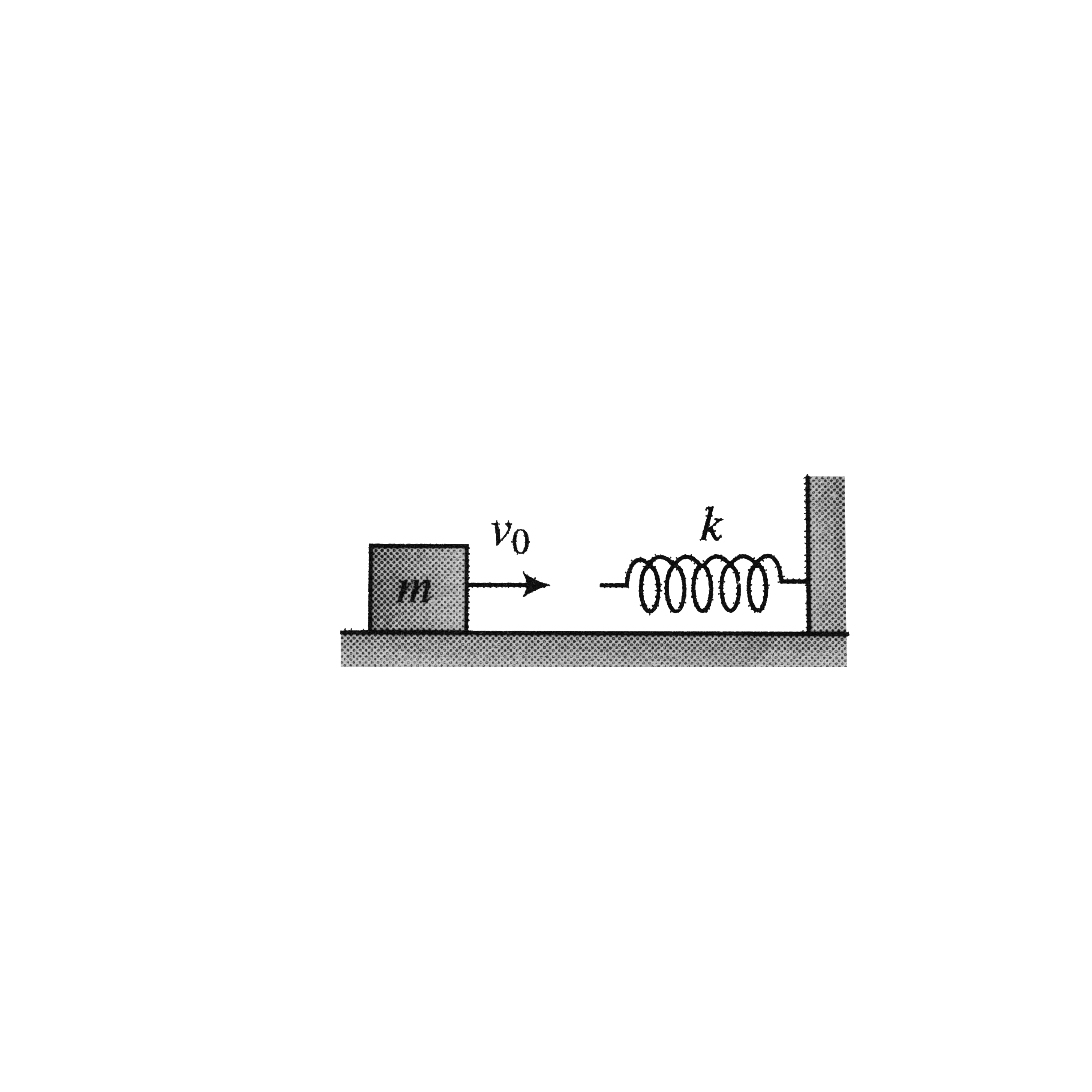
a. Find the maximum compression in the spring.
b. Is the work done by the spring negative or positive?02:10View SolutionA block of mass m is released from rest at point A. The compression in spring (force constant k) when the speed of block is maximum is found to be `(nmg cos theta)/(4k)`. What should be the value of n?
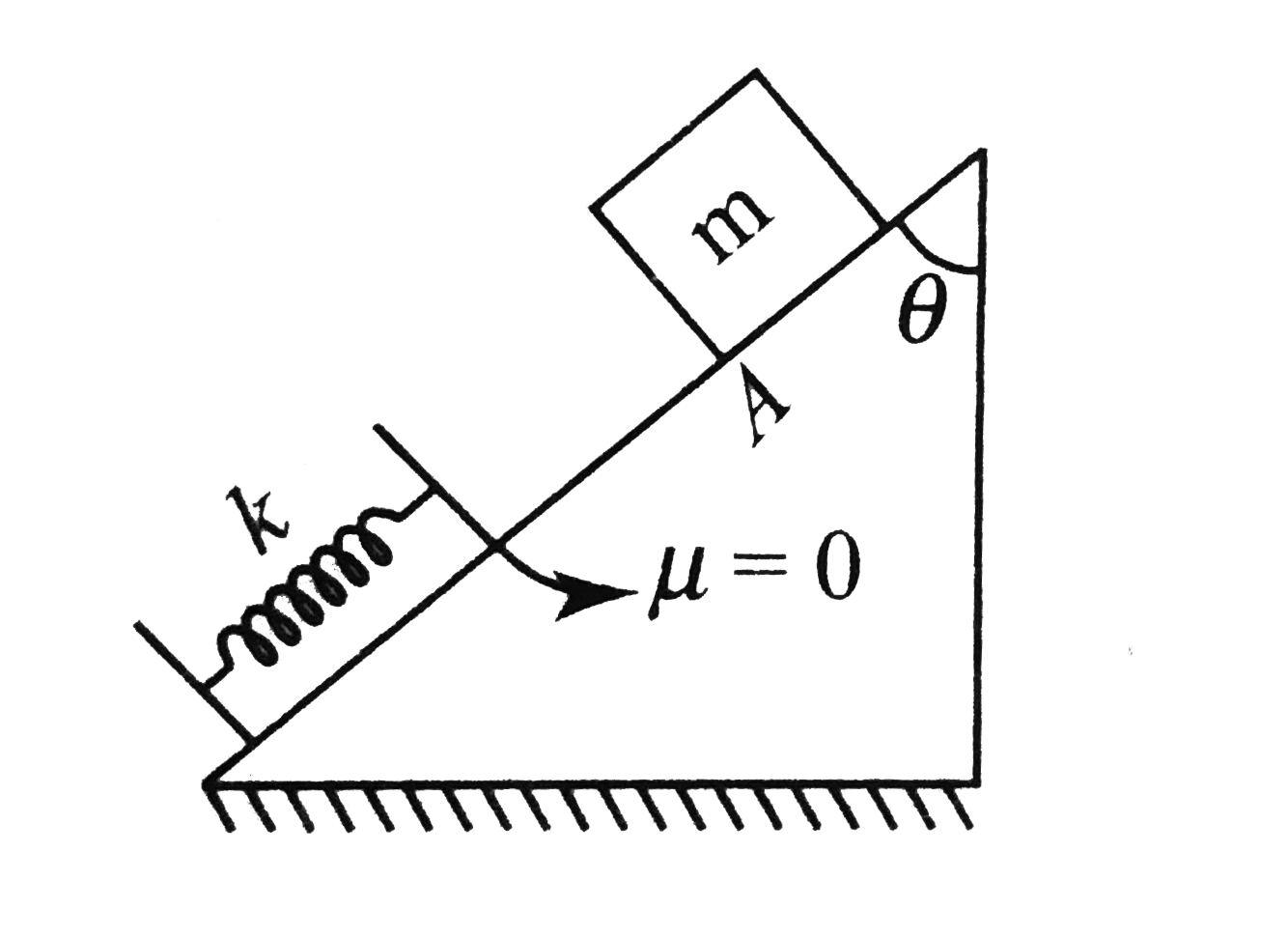 02:19View Solution
02:19View SolutionIn figuer, shown all the surfaces are frictionless, and mass of the block is `m=100g`. The block and the wedge are held initially at rest. Now the wedge is given a horizontal acceleration of `10ms^-2` by applying a force on the wedge, so that the block does not slip on the wedge. Then find the work done in joules by the normal force in ground frame on the block in `1s`.
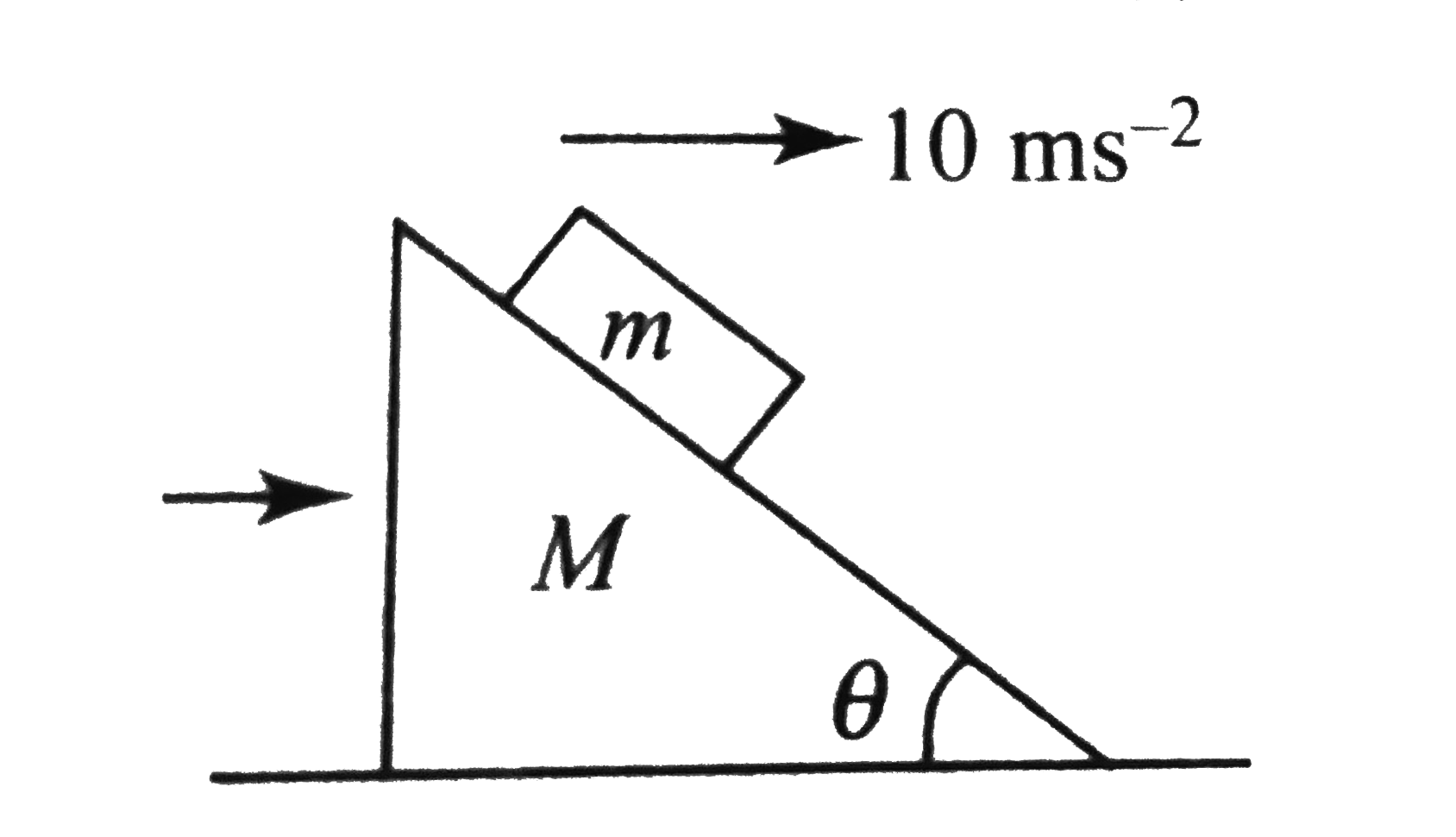 04:05View Solution
04:05View SolutionA car travelling on a smooth road passes through a curved portion of the road in the form of an arc of circle of radius `10m`. If the mass of car is `120kg`, find the reaction (in kN) on car at lowest point P where its speed is `20ms^-1`.
 01:25View Solution
01:25View SolutionA man slowly pulls a bucket of water from a well of depth `h=20m`. The mass of the uniform rope and bucket full of water are `m=200g` and M `19.9kg`, respectively. Find the work done `(in kJ)` by the mean.
02:16View SolutionThe arrangement shown in figure is at rest. An ideal spring of natural length `l_0` having spring constant `k=220Nm^-1`, is connected to block A. Blocks A and B are connected by an ideal string passing through a friction less pulley. The mass of each block A and B is equal to `m=2kg` when the spring was in natural length, the whole system is given an acceleration `veca` as shown. If coefficient of friction of both surfaces is `mu=0.25`, then find the maximum extension in `10(m)` of the spring. `(g=10ms^-2)`.
 04:08View Solution
04:08View SolutionIn figure, find the velocity of `m_1` in `ms^-1` when `m_2` falls by `9m`.

Given `m_1=m`, `m_2=2m` (take `g=10ms^-2`).04:17View SolutionOne end of a spring of force constant `k_1` is attached to the ceiling of an elevator. A block of mass `1.5kg` is attached to the other end. Another spring of force constant `k_2` is attached to the bottom of the mass and to the floor of the elevator as shown in figure. At equilibrium, the deformation in both the spring is equal and is `40cm`. If the elevator moves with constant acceleration upward, the additional deformation in both the spring is `8cm`. Find the elevator's accelerationn ( `g=10ms^-2`).
 03:12View Solution
03:12View SolutionA system consists of two identical cubes, each of mass `3kg`, linked together by a compressed weightless spring of force constant `1000Nm^-1`. The cubes are also connected by a thread which is burnt at a certain moment. At what minimum value of initial compression `x_0` (in cm) of the spring will the lower cube bounce up after the thread is burnt together?
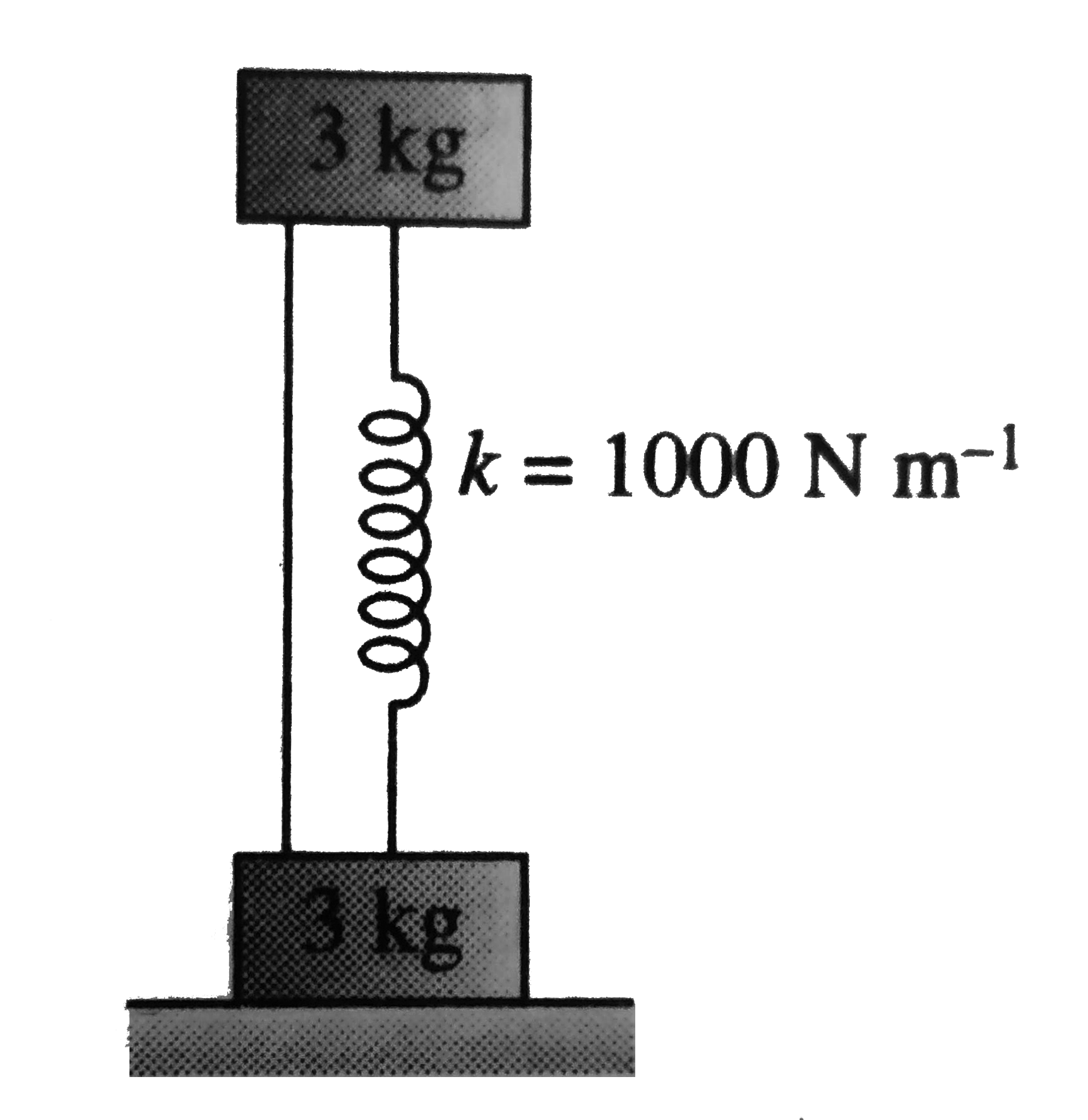 05:43View Solution
05:43View SolutionA particle of mass `5kg` is free to slide on a smooth ring of radius `r=20cm` fixed in a vertical plane. The particle is attached to one end of a spring whose other end is fixed to the top point O of the ring. Initially, the particle is at rest at a point A of the ring such that `/_OCA=60^@`, C being the centre of the ring. The natural length of the spring is also equal to `r=20cm`. After the particle is released and slides down the ring, the contact force between the particle and the ring becomes zero when it reaches the lowest position B. Determine the force constant `(i n xx 10^2Nm^-1)` of the spring.
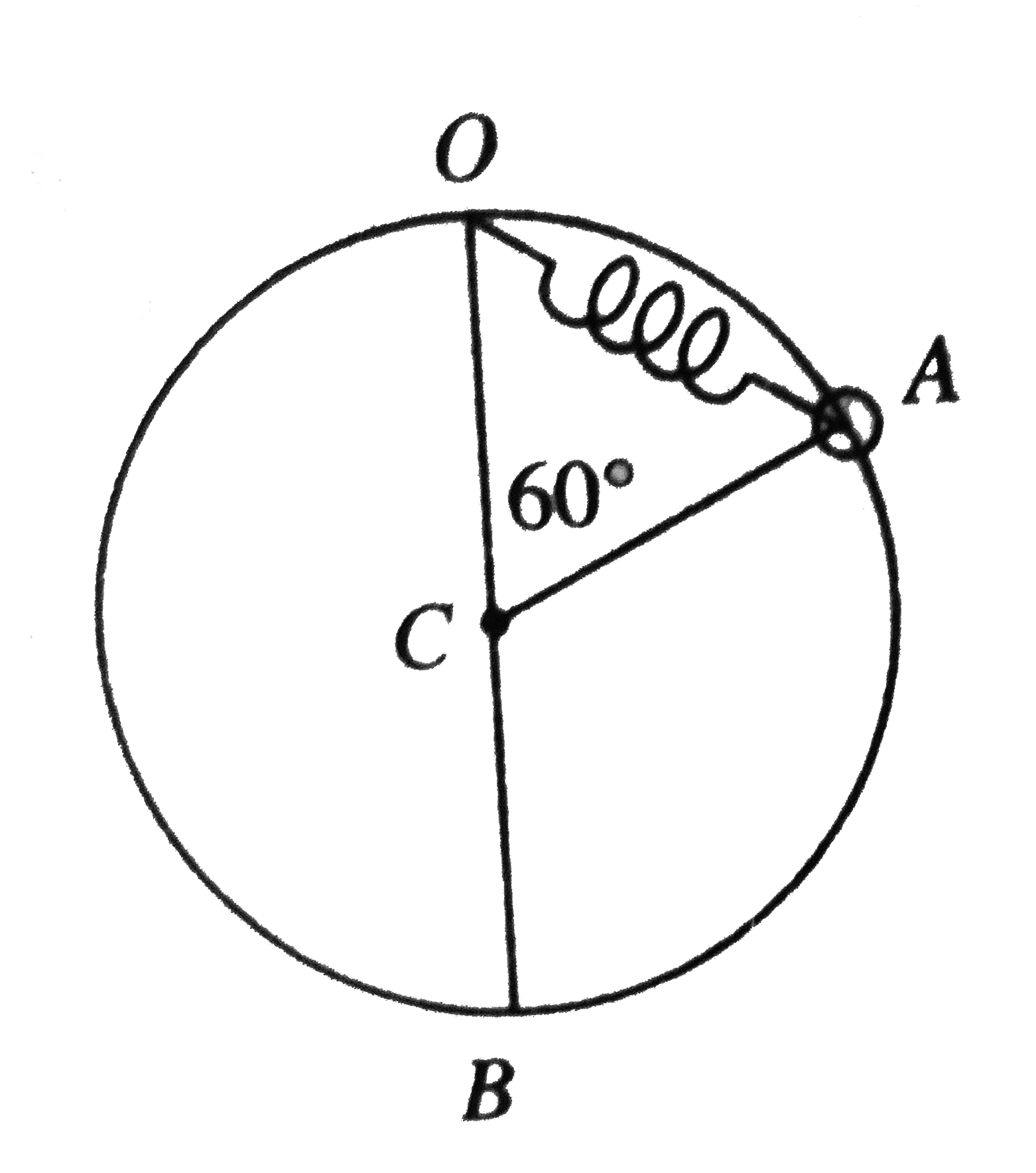 View Solution
View SolutionA `2144kg` freight car roles along rails with negligible friction. The car is brought to rest by a combination of two coiled springs as illustrated in figure. Both springs are described by Hooke's law with `k_1=1600Nm^-1` and `k_2=3400Nm^-1`. After the first spring compresses a distance of `30.0cm`, the second spring acts with the first to increase the force as additional compression occurs as shown in the graph in figure. The car comes to rest `50.0cm` after first contracting the two-spring system. Find the car's initial speed `(i n xx10^-1Nm^-1)`.

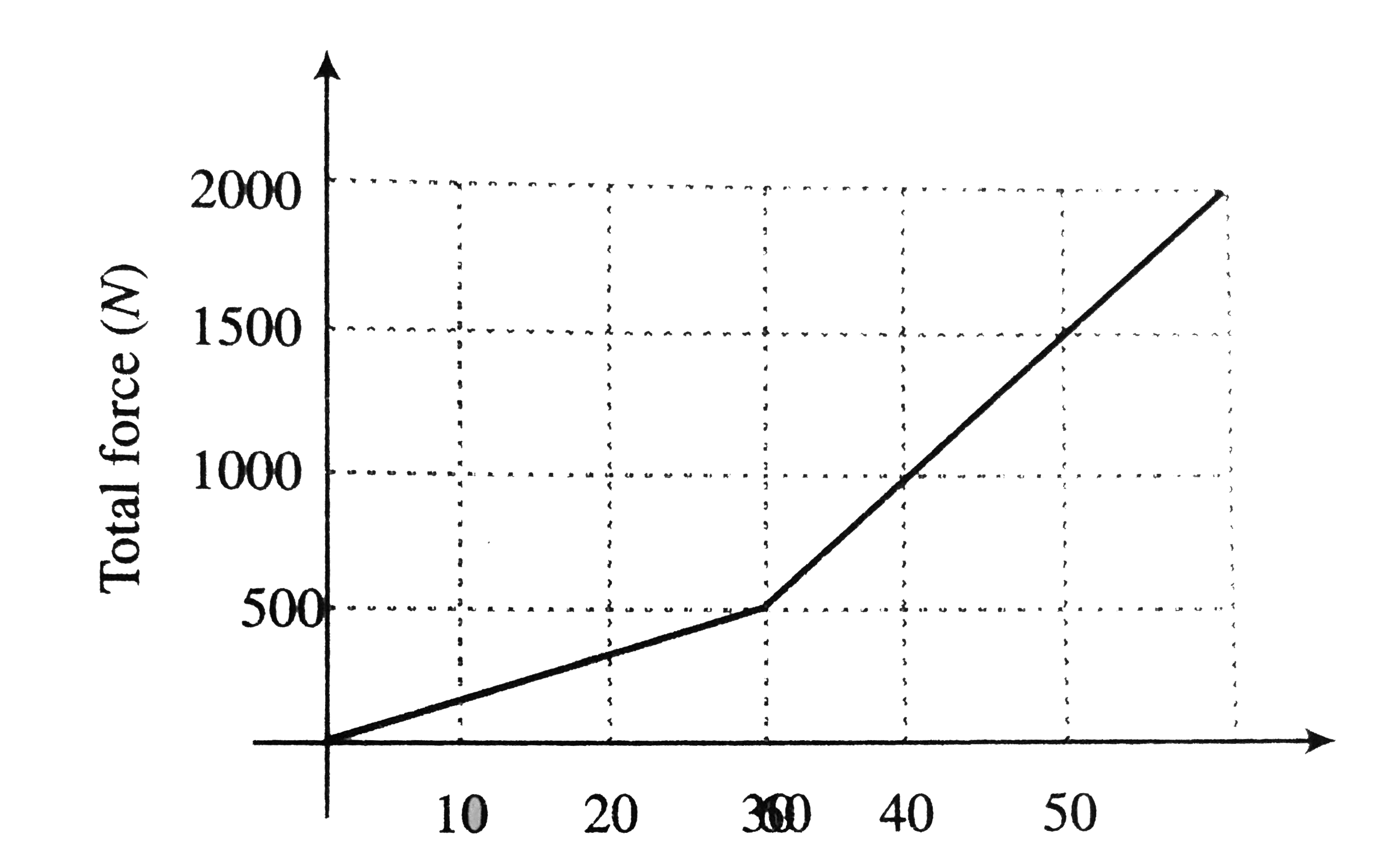 05:04View Solution
05:04View Solution
Integer questions and complete solutions for chapter WORK, POWER & ENERGY of CENGAGE PHYSICS (ENGLISH) of Class 11
